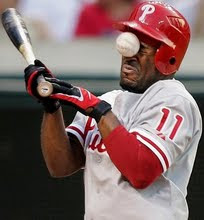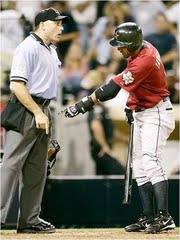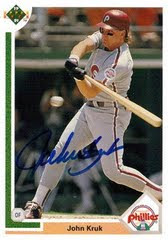
These correlations are taken from 2009 pitchers with a minimum of 70IP on the season. The first striking revelation is the extremely low correlation between K rate and walk rate. It seems these two qualities in a pitcher are independent of each other. A guy like Steve Phillips may believe a strike out pitcher might be more wild causing an elevated walk rate. While a guy like Rick Sutcliffe may believe a superior strike out pitcher also has superior ability to the control the strike zone leading to a lower walk rate. Well, this year's data strongly suggests there is no overlap of K and BB within a population.
A high K rate is also associated with a lower batting average against when compared to high K/BB ratios. Clearly, lots of strikeouts makes it difficult for hitters to have the opportunity for base hits, however it is K/BB ratio that has a significantly stronger correlation to base runners allowed(WHIP).
I believe the thing to take away from this post is that a high K rate is obviously beneficial for a pitcher, but if their overall K/BB ratio lags behind due to a high walk rate it, it will most likely lead to an underachieving pitcher. We have seen many such examples such as Carlos and Victor Zambrano, Kerry Wood, Chad Guadan, Carlos Marmol, Jose Contreras, and Jonathan Sanchez just to name a few.







1 comments:
well what i was trying to get at is that command (BB/9) and control (k/bb) are two separate skills. Good analysis, however
Post a Comment